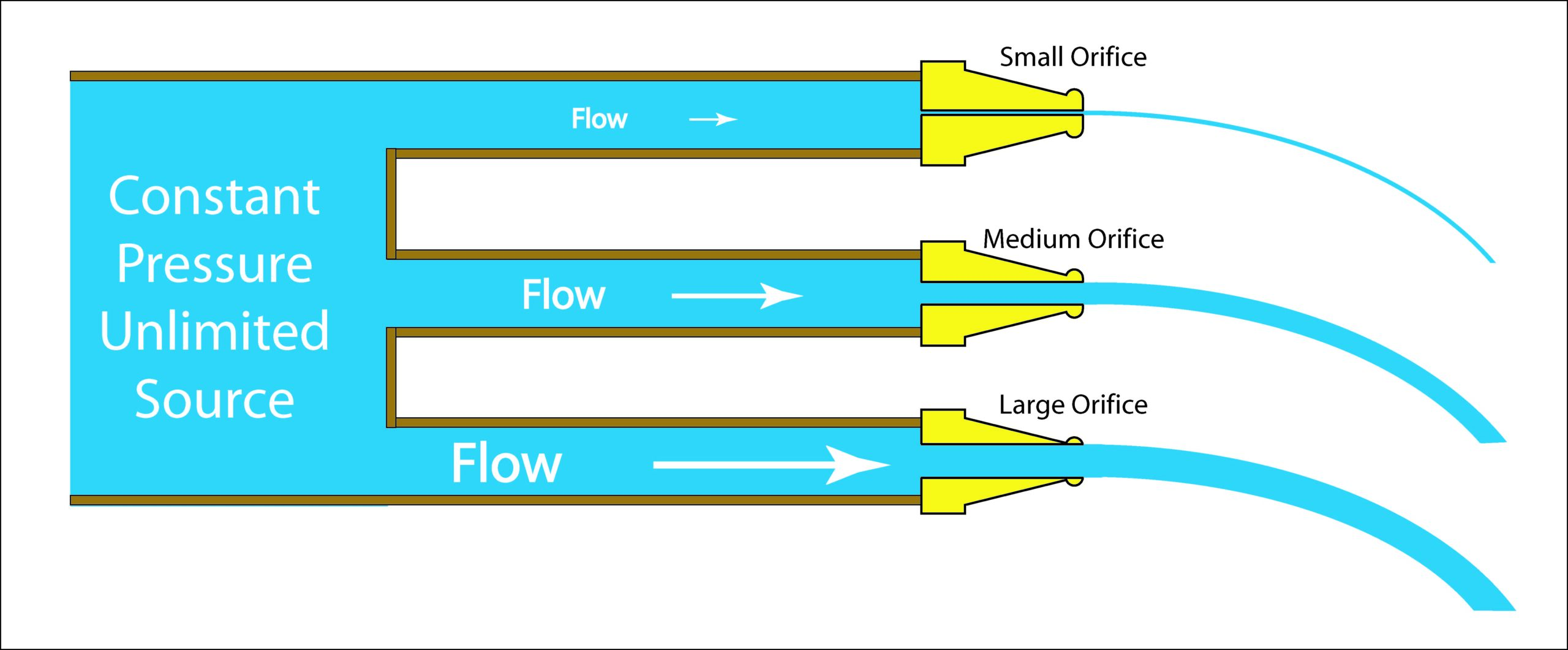There is often a need in any system involving flow of a liquid to control the flow and/or pressure of that liquid. Since the two are different and yet inter-dependant, it can be confusing when trying to determine if flow control or pressure control is the intended goal and how it will be best be accomplished. Unfortunately, a wrong choice can easily lead to unexpected, inconsistent, or even “disastrous” results.
Under the right conditions, both pressure and flow control can be achieved using a restriction in the plumbing line. Partially open manual valves and fixed orifices of varying descriptions are commonly used to introduce a restriction in a plumbing line. This is, in fact, how most kitchen and bathroom faucets work. Yep, it is an orifice built into the shower head that accounts for a disappointing “trickle” compared to an invigorating shower! The sound of “running water” in a pipe is usually due to a restriction in a valve or an orifice.
If the pressure of the supply remains constant the following illustrations apply.

A reduction in orifice size results in decreased flow as only so much liquid can pass through the orifice. In all of the above cases, the inlet pressure is constant and the outlet pressure is, effectively, zero (atmospheric) as there is nothing to restrict flow on the exit side of the orifice. How much liquid passes through the orifice depends on the pressure of the liquid as it approaches the orifice, the size and length of the orifice and the pressure on the exit side of the orifice.
Note – To be technically correct, the viscosity of the liquid must also be considered, but since we are usually dealing with water or something with a viscosity near that of water we’ll overlook that for now.

Discover Aquarius™, the ultimate solution where ultrasonic technology meets efficiency in a tank-to-tank cleaning system.
Since the flow of liquid is limited by the orifice, it follows that the pressure on the exit side of the orifice is less than that on the inlet side. BUT, this is dependent on and ONLY true if there is liquid flow. If there is no flow, or if there is a secondary restriction on the exit side of the orifice (a spray nozzle for example), the pressure differential across the orfice will behave as shown below. Using an orifice with the intent of reducing pressure is, therefore, risky unless all of the variables mentioned in the paragraph above are held constant.

Consider the following example – – A flow control is installed in the plumbing line feeding a spray manifold. The incoming pressure (perhaps supplied by a connection to the water main or a pump with known characteristics) remains relatively constant. The valve is adjusted to the desired flow and all things are good UNTIL something changes. Let’s say that one or more of the spray nozzles becomes clogged. The result is an increase of the back pressure on the orifice. If more nozzle(s) become clogged, the pressure on the exit side of the orifice will increase accordingly with the only limit being the supply pressure to the orifice.
In the case of the above example involving spray nozzles, the consequences of the change in pressure may not be severe. In another example, however, the results could be disastrous. Let’s say a restricting orifice is incorrectly used to reduce pressure to a pressure sensitive component like a cooling jacket around a cleaning tank. If, by accident, the outlet of the cooling jacket is inadvertently restricted by someone closing a valve, the pressure in the jacket will increase to the point that it could be deformed or, still worse, rupture.
In summary, orifices are, at best, flow limiters but unless all other parameters are carefully controlled should not be relied on to reduce or control pressure. Reliable pressure control requires a device specifically designed for the purpose which will be described in the next blog.
– FJF –

 Water – De-ionized – Hints
Water – De-ionized – Hints  A Fond Farewell to John Fuchs
A Fond Farewell to John Fuchs  Millipore Testing – Evaluation by Particle Counting
Millipore Testing – Evaluation by Particle Counting  Tape Test for Cleaning Revisited
Tape Test for Cleaning Revisited